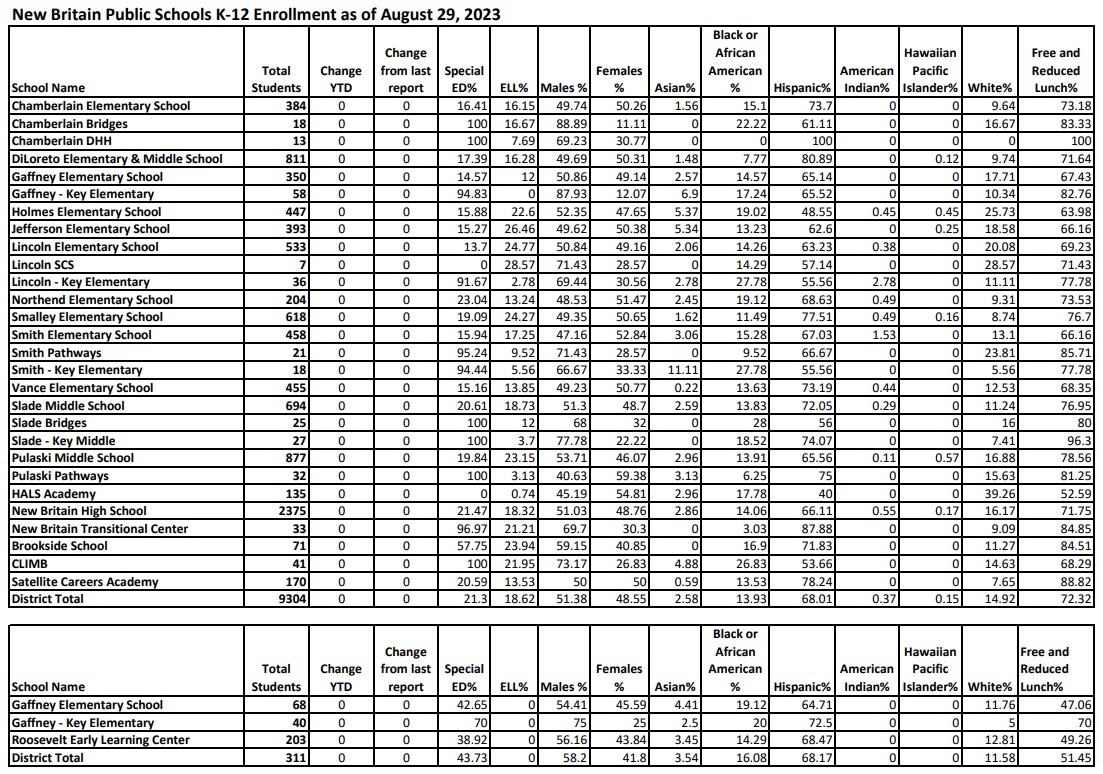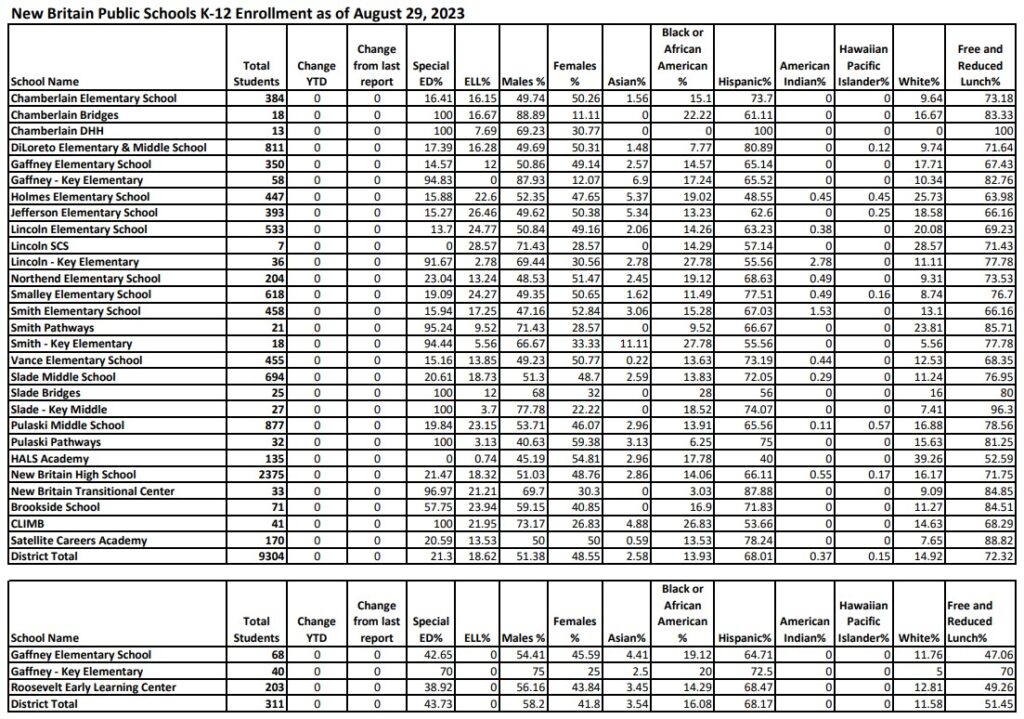
Enrollment Report Shows Differences in Ethnicity and Income Among City Schools
The New Britain Board of Education is to receive a report at its meeting tonight with data that shows a notable difference in the ethnicity between schools.
While the New Britain school district consists overwhelming of students of color and disproportionately of lower income, which is reflected in the demographics of all of the city’s schools, the data in the report shows notable demographic and income differences among the city’s middle and elementary schools.
Two middle schools, Slade and Pulaski, each have student populations consisting of greater than 80% students of color, including Latinos, African-Americans, Asians and Hawaiians and Pacific Islanders. Slade is reported as 11.24% white and Pulaski as 16.88% white.
Those two schools have higher than the districtwide average of 72.32% of students eligible for free and reduced cost lunches, a statistic which is commonly used as an indicator of students whose households have lower incomes.
However, the other major middle school, HALS, is very different. HALS has the highest proportion of white students in the district, at 39.26%, according to the report, and 60.74% students of color. Its proportion of students eligible for free and reduced cost lunches, 52.59%, is far lower than Slade and Pulaski and the city’s average.
The report appears to indicate a similar pattern with elementary schools.
Of all the main elementary schools in the district, the Holmes School, located in the relatively more affluent northern part of the city, has the highest proportion of white students, 25.73%, and the lowest proportion of students of color, 73.84%. The district average, which includes schools of all grade levels, is 14.92% white and 85.04% students of color.
Holmes is also has the lowest proportion of students eligible for free and reduced cost lunches among the main elementary schools, at 63.98%.
The elementary school with the highest proportion of students of color, at 91.27%, is the Smalley School, which also has the highest proportion of students eligible for free and reduced cost lunches of all of the main elementary schools, at 76.70%.
In addition to Smalley School, Chamberlain, DiLoreto and Northend schools all have greater than 90% students of color, and greater than 70% of the students in each are eligible for free and reduced cost lunches.
In 2013, under then-Superintendent Kelt Cooper, the school system changed to a “neighborhood schools” system. This was a change from the system that had been in place for a considerable amount of time by then. As NB Politicus reported on February 24, 2013,
Over the last decade or so the school district established specialized programs or magnets with learning communities and supports as choices for families (available via lottery) across the city with the intent of developing models for higher student achievement. The neighborhood school proposal notes that “while most students attending these select programs attained high levels of academic achievement, the strategy did not increase overall school district performance.”
The primary objective of Cooper and the school board appeared to be to reduce bussing costs, as NB Politicus reported in 2013, “The neighborhood school proposal identifies a potential saving of $78,200 for each bus taken out of service in 2013-2014.”
But the plan was understood at the time as one would exacerbate segregation within the school district. When the plan was finally approved by the school board, the Hartford Courant, on April 9, 2013 reported that,
One note of concern was raised by board member Aram Ayalon. He said the percentage of minority students would be higher at North End and Smalley schools than at the other elementary schools under the plan outlined on Monday.
Ayalon is currently a City Council member representing the Ward 3.
The same 2013 Hartford Courant article noted that then school, “board Chairwoman Sharon Beloin-Saavedra said she does not think those percentages are out of line. ‘The majority of students who come to school in New Britain are not white, period,’ Beloin-Saavedra said.”
The enrollment report is on the agenda of the September 5, 2023 Board of Education meeting, to be presented for approval by the Board.
The New Britain Progressive, a publication of New Britain Independent Newspaper, Inc. is free to read and community supported. http://newbritainprogressive.com. Please feel free to help the New Britain Progressive with a donation, and you are invited to purchase advertisements in the New Britain Progressive. If you would like to submit an event for inclusion in the New Britain Progressive weekly events articles, or would like to update something already listed on the New Britain Progressive, feel free to visit this web page.




